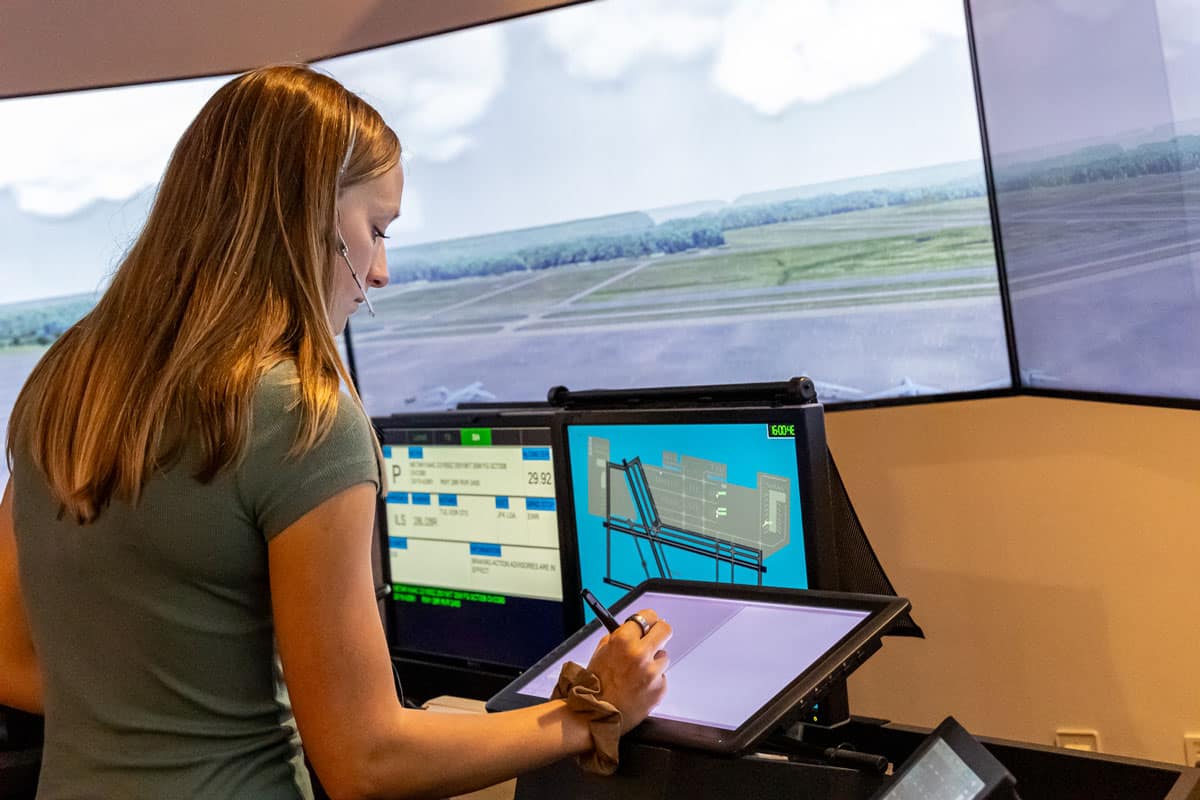Aviation Week Op-Ed: New Hiring Path Helps Ready Students Fill Air Traffic Control Ranks, Embry-Riddle President Writes

In his latest Aviation Week essay, Embry‑Riddle Aeronautical University President P. Barry Butler, Ph.D., lauds the Federal Aviation Administration for executing the Enhanced Air Traffic Collegiate Training Initiative (AT-CTI) program, which accelerates the hiring of graduates from FAA-approved university programs. He highlights how this initiative will help to fill the air traffic controller pipeline. Through the Hunt Library, the Eagle community can log onto ERNIE to freely access the op-ed. Alternatively, subscribers to Aviation Week can log on here to access the essay, which is also provided below.
The alarm has been sounded: Our nation’s air traffic controllers are stretched thin. Meanwhile, the stakes are as high as ever for controllers, who orchestrate tens of thousands of takeoffs and landings daily and manage up to 5,400 planes in the sky at peak operational times.
The root of the problem is a decades-long decline in the air traffic control (ATC) workforce. Retirements of controllers and training interruptions amid the coronavirus pandemic have further exacerbated the shortage.
The good news is that the Federal Aviation Administration hired 1,500 controllers in 2023 and more than 1,800 this year. Still, the FAA will need to hire more than 17,000 over the next decade, according to the agency’s workforce plan, and it aims to greatly step up hiring efforts in the next two years.
The agency needs more controllers than the academy can train, even when “it’s going full bore,” said Dr. Mike McCormick, Air Traffic Management program coordinator at Embry-Riddle Aeronautical University and a former vice president at the FAA’s Air Traffic Organization.
As the FAA makes every effort to alleviate the controller shortage, the agency has taken a significant step forward by successfully executing the Enhanced Air Traffic Collegiate Training Initiative (AT-CTI) program, which was first announced in February of this year.
The program accelerates the hiring of graduates at FAA-approved university programs by allowing them — once they pass the Air Traffic Skills Assessment (ATSA) exam and meet medical and security requirements — to bypass the FAA Academy in Oklahoma City and start on-site training immediately.
In early October, the FAA announced that two Oklahoma schools — Tulsa Community College and the University of Oklahoma — had signed agreements for the Enhanced AT-CTI program. “We’re excited to have these schools become pioneers in this initiative,” FAA Administrator Mike Whitaker told The Hill, a Washington, D.C., media outlet.
Embry-Riddle’s Daytona Beach, Florida, campus has also signed an agreement with the FAA for the Enhanced AT-CTI program after successfully completing a final audit by the agency at the end of last month.
To qualify, university programs — rightly — must have the same exacting curricula and testing as the FAA Academy. For instance, McCormick had to demonstrate how the learning outcomes of our introductory/advanced air traffic control tower courses aligned precisely with the FAA’s terminal initial quality training.
Maintaining the FAA Academy’s rigor eliminates any concern that the enhanced program is not of the same level.
Simulators must also meet the standards of the FAA Academy. Embry-Riddle has three simulation labs that emulate ATC control tower, terminal radar and en route domains.
“We have the actual cabinets and consoles that the FAA uses,” McCormick explained. “We have all the ancillary displays that you would have in a control tower to match what they have at Oklahoma City. And we have always used the same airspace, procedures and phraseology as the academy.”
Rachel St. Louis, a student at the Daytona Beach Campus who will graduate in December with a bachelor’s degree in Air Traffic Management, recognizes the challenges facing air traffic controllers, notably fatigue and burnout, which have been well publicized. But rather than deter her, these issues have strengthened her sense of purpose.
St. Louis, who has accepted a firm offer letter from the FAA and will attend the academy after graduation, said she knew she had found her calling after her first semester in our program.
“Being an air traffic controller is about safety,” explained St. Louis, who was taught to fly by her father at age 10 when he was serving as a police officer in a small county in Maine.
The passengers on every plane are “moms, dads, brothers, sisters,” she said. “They are firefighters or first responders going on vacation. It’s about protecting them when they are unable to protect themselves,” she said.
St. Louis, 23, and her peers are passionate about ATC. They are also skilled and ready to begin their careers.
The Enhanced AT-CTI program will get them into towers and facilities sooner, where they will ensure the safety of our nation’s aviation system now — and for years to come.
